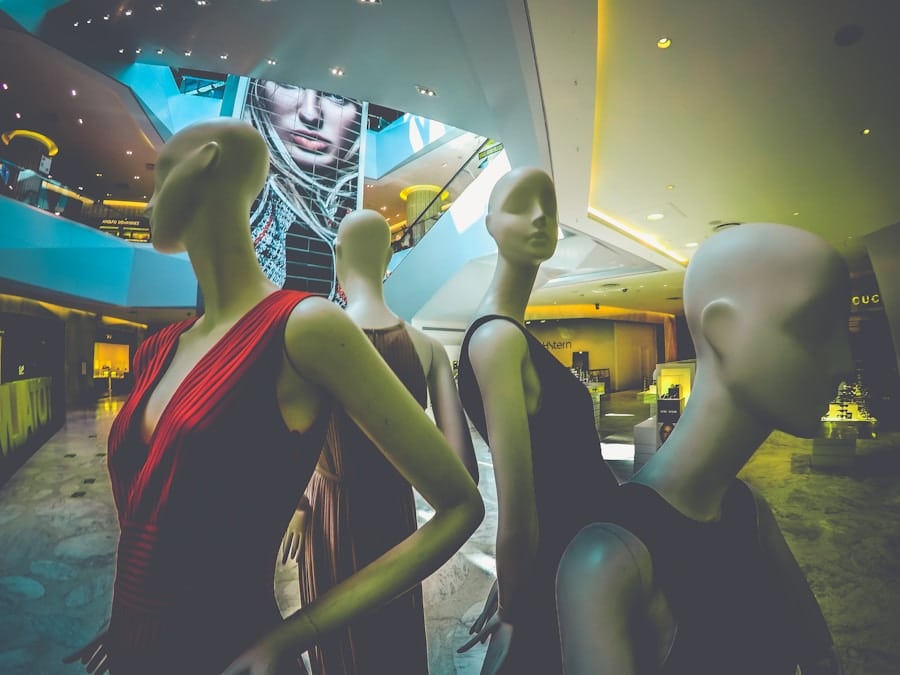The emergence of the metaverse has catalyzed a transformative shift in the fashion industry, giving rise to digital fashion as a new frontier. This virtual realm, characterized by immersive experiences and interconnected digital environments, has opened up unprecedented opportunities for creativity and expression. As avatars become extensions of our identities, the demand for unique, customizable digital attire has surged.
Brands and independent designers alike are now exploring how to craft garments that exist solely in the digital space, leading to a burgeoning market that challenges traditional notions of fashion. Digital fashion is not merely a trend; it represents a fundamental change in how we perceive clothing and identity. In the metaverse, users can curate their virtual wardrobes with pieces that may never exist in the physical world.
This shift is driven by a younger generation that values individuality and self-expression over conventional fashion norms. Platforms like Decentraland and Roblox have become playgrounds for digital fashion enthusiasts, where users can purchase, trade, and showcase their virtual outfits. The rise of non-fungible tokens (NFTs) has further fueled this movement, allowing digital garments to be bought and sold as unique assets, thus creating a new economy around virtual fashion.
Key Takeaways
- The metaverse is driving the rise of digital fashion, creating new opportunities for designers and brands.
- Digital fashion designers play a crucial role in creating virtual wardrobes and shaping the future of fashion in the metaverse.
- Digital fashion is disrupting the traditional fashion industry, impacting everything from production to retail.
- Virtual fashion shows and runways offer exciting potential for creativity and engagement in the metaverse.
- Brands and designers have the opportunity to monetize digital fashion through virtual products and experiences.
Creating Virtual Wardrobes: The Role of Digital Fashion Designers
The Art of Digital Storytelling
This requires a deep understanding of 3D modeling software and an ability to think creatively about how clothing can be experienced in a non-physical space. The role of digital fashion designers extends beyond mere aesthetics; they are also storytellers who craft narratives around their creations. Each piece can embody themes, emotions, or cultural references that resonate with users in profound ways.
Narratives in Digital Fashion
For instance, a designer might create a collection inspired by cyberpunk aesthetics, incorporating elements that reflect societal issues or futuristic visions. This narrative aspect adds depth to digital fashion, allowing consumers to connect with their virtual wardrobes on a more personal level.
The Future of Virtual Fashion
As the metaverse continues to evolve, the demand for skilled digital designers will only increase, pushing the boundaries of what is possible in virtual fashion.
The Impact of Digital Fashion on Traditional Fashion Industry

The rise of digital fashion is not without its implications for the traditional fashion industry. As consumers increasingly gravitate towards virtual experiences, established brands are compelled to adapt or risk obsolescence. This shift has prompted many luxury labels to explore digital collections and collaborations with virtual platforms.
For example, Balenciaga launched a digital collection in collaboration with Fortnite, allowing players to dress their avatars in high-fashion pieces. Such initiatives not only expand brand reach but also engage younger audiences who prioritize digital interactions over physical shopping. Moreover, the environmental impact of traditional fashion is under scrutiny as digital alternatives gain traction.
The fast fashion industry is notorious for its resource-intensive practices and waste generation. In contrast, digital fashion offers a sustainable solution by eliminating the need for physical production and distribution. Brands that embrace this shift can position themselves as environmentally conscious while appealing to consumers who are increasingly aware of sustainability issues.
This intersection of technology and ethics presents an opportunity for traditional fashion houses to reinvent themselves in a way that aligns with contemporary values.
Exploring the Potential of Virtual Fashion Shows and Runways
Virtual fashion shows represent another innovative aspect of digital fashion that has gained momentum in recent years. These events allow designers to showcase their collections in immersive environments that transcend the limitations of physical runways. By leveraging technologies such as augmented reality (AR) and virtual reality (VR), brands can create captivating experiences that engage audiences in novel ways.
For instance, during the COVID-19 pandemic, many designers turned to virtual platforms to present their collections, leading to an explosion of creativity in how fashion is displayed.
Viewers can engage with the collection in real-time, exploring garments from multiple angles or even customizing pieces on the spot.
This level of engagement fosters a deeper connection between consumers and designers, allowing for immediate feedback and interaction that traditional shows cannot offer. Additionally, virtual shows can reach global audiences without the constraints of location or ticketing, democratizing access to high-fashion events and enabling brands to cultivate a more diverse following.
Monetizing Digital Fashion: Opportunities for Brands and Designers
As digital fashion continues to gain traction, monetization strategies are evolving alongside it. Brands and designers are exploring various avenues to generate revenue from their virtual creations. One prominent model involves selling digital garments as NFTs, which allows consumers to own unique pieces that can be displayed on their avatars or even resold in secondary markets.
This creates a sense of exclusivity and ownership that resonates with collectors and fashion enthusiasts alike. Additionally, subscription models are emerging as a viable option for monetizing digital wardrobes. Platforms may offer users access to a rotating selection of digital clothing for a monthly fee, allowing them to experiment with different styles without committing to permanent purchases.
This model not only provides a steady revenue stream for designers but also encourages consumers to engage with digital fashion more frequently. As brands continue to innovate in this space, the potential for monetization will expand, paving the way for new business models that cater specifically to the needs of virtual consumers.
The Role of Technology in Shaping the Future of Digital Fashion

Technology is the backbone of digital fashion, driving innovation and shaping its trajectory in profound ways. Advances in 3D modeling software have made it easier for designers to create intricate garments that mimic real-world textures and movements. Additionally, developments in AR and VR technologies enable users to visualize how clothing will look on their avatars before making a purchase decision.
This technological integration enhances the shopping experience by providing consumers with tools that facilitate informed choices.
AI algorithms can analyze user preferences and behaviors to recommend outfits tailored to individual tastes.
This level of customization not only enhances user satisfaction but also fosters brand loyalty as consumers feel more connected to their virtual wardrobes. As technology continues to evolve, it will undoubtedly unlock new possibilities for creativity and interaction within the realm of digital fashion.
Navigating the Ethical and Environmental Implications of Digital Fashion
While digital fashion presents numerous advantages, it also raises important ethical and environmental considerations that must be addressed as the industry grows. One key concern is the energy consumption associated with blockchain technology used for NFTs and other digital assets. The environmental impact of minting NFTs has sparked debates about sustainability within the digital realm.
As brands seek to capitalize on this trend, they must also consider how their practices align with broader sustainability goals. Furthermore, issues related to labor practices in the creation of digital garments cannot be overlooked. As with any industry, there is a risk that the pursuit of profit could lead to exploitative practices among designers or developers working in this space.
Ensuring fair compensation and ethical treatment for all individuals involved in the creation of digital fashion is crucial for fostering a responsible industry culture. By prioritizing ethical considerations alongside innovation, stakeholders can help shape a future where digital fashion thrives without compromising social or environmental values.
Embracing Diversity and Inclusivity in the Metaverse Fashion Industry
The metaverse offers a unique opportunity to promote diversity and inclusivity within the fashion industry in ways that traditional platforms often struggle to achieve. Digital environments allow for greater representation across various demographics, including body types, ethnicities, genders, and styles. Designers can create garments that cater to diverse audiences without being constrained by physical limitations or societal norms associated with traditional fashion.
Moreover, the ability to customize avatars opens up avenues for self-expression that transcend conventional beauty standards. Users can experiment with different looks and identities without fear of judgment or exclusion. This democratization of fashion fosters a sense of belonging within virtual communities where individuals can celebrate their uniqueness while connecting with others who share similar interests.
As the metaverse continues to evolve, embracing diversity and inclusivity will be essential for creating an equitable landscape where all voices are heard and represented in the world of digital fashion.
In a world where technology is constantly evolving, the concept of digital fashion in the metaverse is creating a new industry that is revolutionizing the way we perceive clothing and style. As we delve deeper into the digital realm, the possibilities for virtual fashion are endless. For those interested in staying healthy while navigating this digital landscape, investing in the best Android health management watches could be a game-changer. These watches offer a variety of features to help users track their fitness goals and overall well-being. Check out this article on the best Android health management watches to learn more about how technology is shaping the future of health and fashion.
FAQs
What is digital fashion in the metaverse?
Digital fashion in the metaverse refers to the creation and wearing of virtual clothing and accessories within a digital environment. This can include virtual fashion shows, digital clothing for avatars, and virtual fashion marketplaces.
How is digital fashion in the metaverse creating a new industry?
Digital fashion in the metaverse is creating a new industry by providing opportunities for designers, developers, and entrepreneurs to create and sell virtual clothing and accessories. This industry also includes virtual fashion events, marketing, and branding within the metaverse.
What are the benefits of digital fashion in the metaverse?
The benefits of digital fashion in the metaverse include reduced environmental impact compared to traditional fashion, the ability to experiment with unique designs and materials, and the potential for a global audience and market reach.
How is digital fashion in the metaverse impacting the traditional fashion industry?
Digital fashion in the metaverse is impacting the traditional fashion industry by offering new ways for brands to engage with consumers, creating opportunities for virtual collaborations, and challenging the traditional concept of physical clothing and retail.
What are some challenges of digital fashion in the metaverse?
Some challenges of digital fashion in the metaverse include issues related to intellectual property and copyright, the need for technological infrastructure to support virtual fashion experiences, and the potential for virtual fashion to be seen as less valuable than physical fashion.

